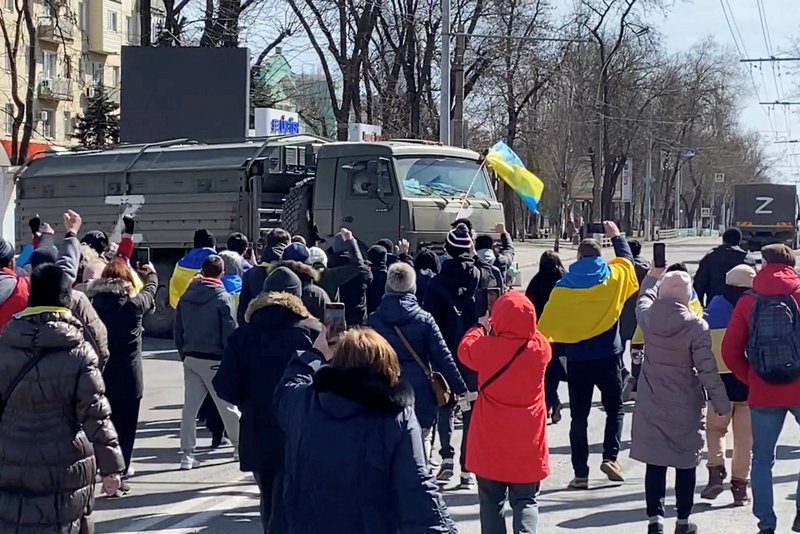"Non-violent struggle has a limited but important role to play in the Russia-Ukraine war." (Dr Neil Renic)
Russia’s violent assault on Ukraine is morally and legally indefensible. The Ukrainian people have a right to resist this aggression, and to injure and kill Russian soldiers in defence of their lives and territory. But violence is not the only tool available in this fight. Non-violent struggle has a record of success, and may be, in some circumstances at least, a preferable method of resistance.
What is non-violence?
In its strongest form, pacifism is fundamentally and unconditionally opposed to violence and war. This opposition may be principled (killing and the institutions that sustain killing are morally illegitimate), practical (violence is a deficient means of struggle), or both.
I do not hold to this view, nor do I recommend it to others. State and non-state actors may have the right, and on occasion, even the moral duty to engage in armed conflict. The defence of the homeland against foreign predation and protection of human life against tyrannical injustice is one such occasion. The defensive war Ukraine is fighting is a textbook Just War, and efforts to criticise such action from a pacifist perspective should be contested.
The recognition that physical violence may be necessary under certain circumstances, however, should not blind us to the value of non-violent struggle as a method of resistance and change. Among much of the public and political class, non-violence is seen as utopian, impractical, and suspiciously hippyish at best; dangerous, unpatriotic, and craven at worst. Even in academic circles, non-violence remains an understudied and largely uncredited tool of conflict.
Contrary to these misconceptions, non-violence is an assertive, courageous, and tactically sophisticated form of struggle; one leveraged throughout history to great effect.
Non-violence today
In late March, Russian forces released the mayor of Slavutych (a northern Ukrainian town) after a mass protest by unarmed residents. Other examples of non-violent resistance include the blocking of tanks by Ukrainian citizens, the coordinated removal of road signs, and direct confrontation with Russian soldiers. Non-violent struggle has also taken place in Russia, with thousands facing physical danger and arrest to protest Putin’s war of aggression.
The effect of these acts should not be overstated. The war in Ukraine is immensely violent and likely to get bloodier before it concludes. Ukraine deserves to win and has the right to fight its way to victory. The increase in atrocity crimes by Russian forces and eliminationist rhetoric by Russian news outlets is also worth recognising. I doubt the effectiveness of an exclusively non-violent struggle against those who seek eradication, rather than subjugation.
Non-violence has limits, but is far from inconsequential. It provides an alternative method of resistance for those who seek to oppose Russian injustice without violence. It has the potential to further demoralise Russian combatants, some of whom already doubt the morality and prudence of the attempted conquest (as evidenced by abandoned equipment and defections). It delegitimises Putin’s liberation narrative and reinforces the depth of opposition to Russian brutality. These things matter to those within and beyond Ukraine who are working to defeat this criminal war of aggression. If we are to properly understand how violence and non-violence can effectively interact in defensive war, we cannot treat the latter as an afterthought.
